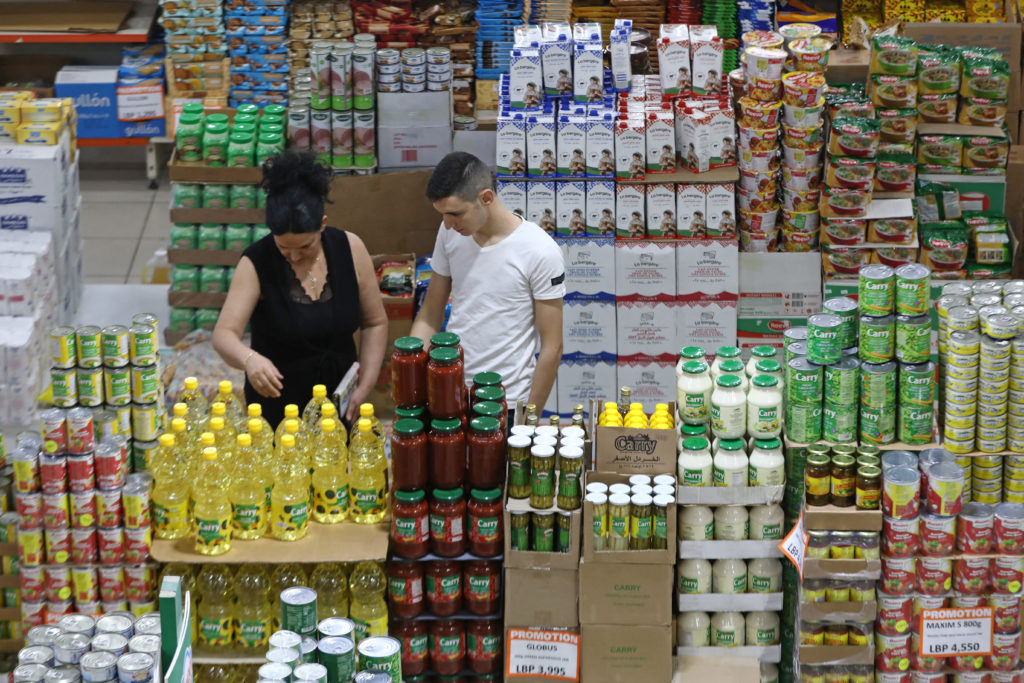São Paulo – Food prices kept climbing in Brazil in the twelve months since the spread of the coronavirus prompted the World Health Organization (WHO) to declare a global pandemic. But Brazilian households aren’t the only ones struggling as inflation pushes prices up. According to numbers from the United Nations Food and Agriculture Organization (FAO), food and beverage costs are going up in at least three Arab countries. Pictured above are shoppers at a supermarket in Lebanon.
Brazilian Food Industry Association (Abia) chairman João Dornellas told ANBA that the prices of key agricultural commodities – traded in global stock markets – have driven up food prices. “[The pandemic] caused a major spike in global food demand, and that remains the case to this day. And so the cost of agricultural commodities such as rice, soya and maize went up last year. We do not see that changing any time soon,” he said during a press conference last month.
Besides, Dornellas explained that the price of food packaging material also went up, and that impacts prices to end buyers. In Brazil, the Brazilian Institute of Geography and Statistics (IBGE) reported that food inflation slowed down marginally. Food and beverage prices were up 0.27% in February – a lower rate than January’s. “This slowdown in February from January is mostly a result of items whose costs had increased a lot over the course of last year, like soya oil and rice. On the other hand, meat prices had deflated somewhat in January, by 0;08%, and now they are going up again,” the IBGE manager in charge of the numbers, Pedro Kislanov, said in a statement.
- Here’s more on this topic: Arabs the 2nd largest destination of food items from Brazil
On the other hand, the National Consumer Price Index was up 0.82% in February, as against a 0.27% increment in January. This was the biggest hike for a February since 2016, which saw a 0.95% rate. Food prices were up 0.17% in February, and 1.01% in January.
The FAO reported that Brazil’s currency, the real, depreciated by 25% year-on-year in February. It said cereal prices were the most affected. Foreign demand also buoyed maize exports and made it harder for Brazil to import wheat. “As a net wheat importer, the depreciation of the local currency made imports costlier, keeping the prices on average 55% above their year-earlier levels. By contrast, prices of rice declined for the second consecutive month as the ongoing harvest improved market supplies,” an FAO statement reads.
Arab countries
As for Arab countries, the FAO said that in Sudan and Yemen, apart from the pandemic, other issues are pushing food prices up. Both countries have been burdened with fighting and flooding in the last few months. In Sudan, staple food prices picked up the most in February, for reasons including a weak local currency, fuel shortages and high prices of agricultural inputs inflating production and transportation costs. The FAO also mentioned disruption to marketing and trading activities related to pandemic.
In Lebanon, the latest available data also indicate food issues, amid an economic and political crisis. In October 2020, overall annual inflation hit 137%, with food inflation shooting past 440%. According to the FAO, currency depreciation is a major culprit, as it makes imports more expensive.
On the other hand
Running counter to other countries, Egypt had its lowest inflation rate in over a decade. The online version of Saudi Arabia’s Arab News daily reported 5% inflation in 2020, the lowest number in 15 years. The figure is in a report from the Cabinet of Egypt, which stressed the measures taken to address the economic impact of the pandemic, including control over food prices to help ease inflation.
Translated by Gabriel Pomerancblum




